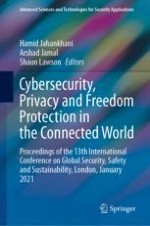2021 | OriginalPaper | Chapter
Cyber-Disability Hate Cases in the UK: The Documentation by the Police and Potential Barriers to Reporting
Authors : Zhraa A. Alhaboby, Haider M. Al-Khateeb, James Barnes, Hamid Jahankhani, Melanie Pitchford, Liesl Conradie, Emma Short
Published in: Cybersecurity, Privacy and Freedom Protection in the Connected World
Publisher: Springer International Publishing
Activate our intelligent search to find suitable subject content or patents.
Select sections of text to find matching patents with Artificial Intelligence. powered by
Select sections of text to find additional relevant content using AI-assisted search. powered by
